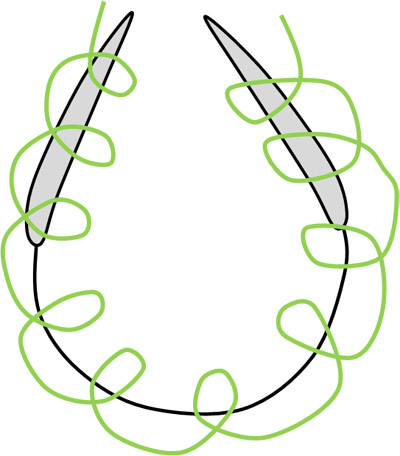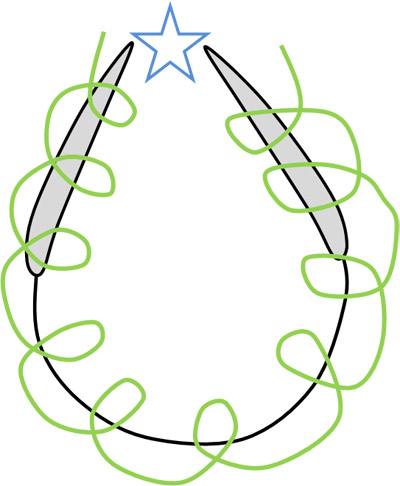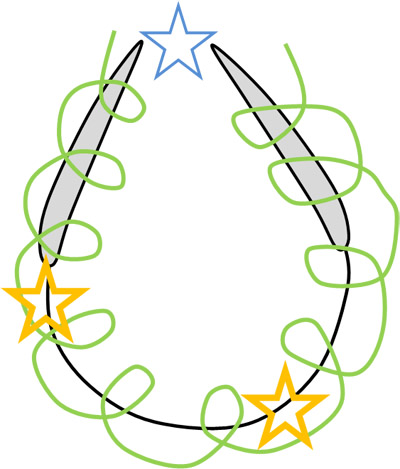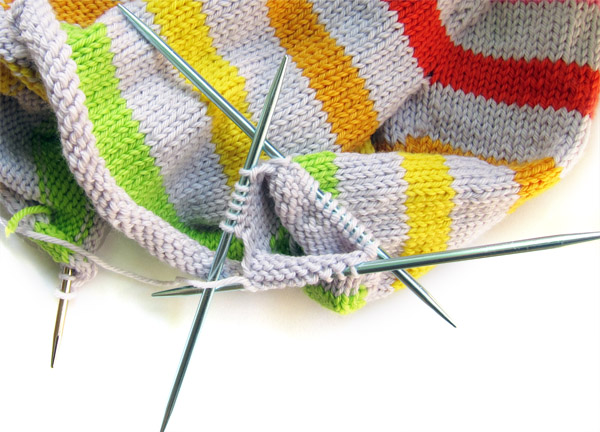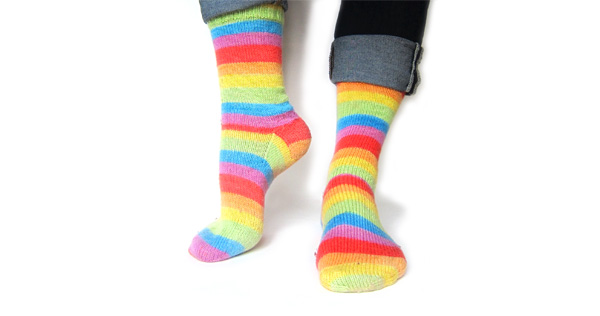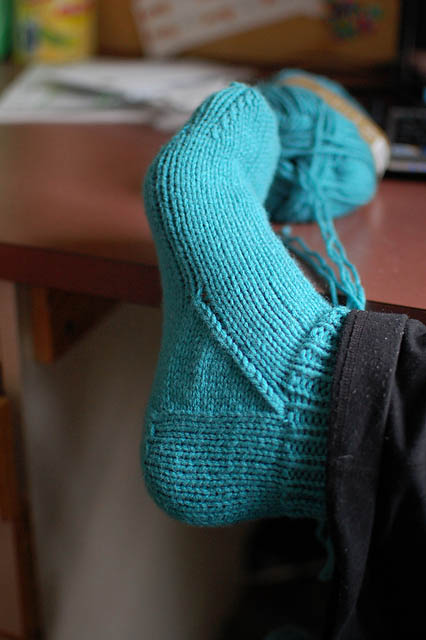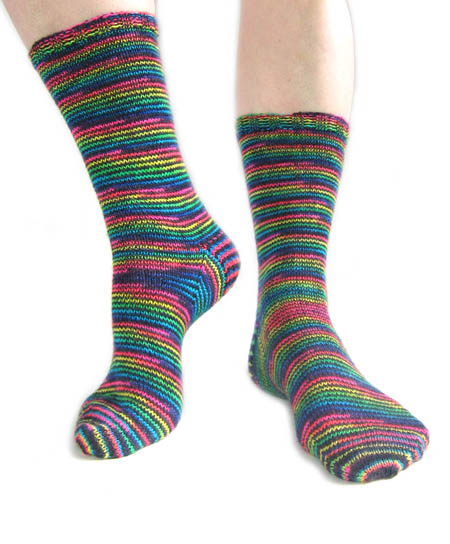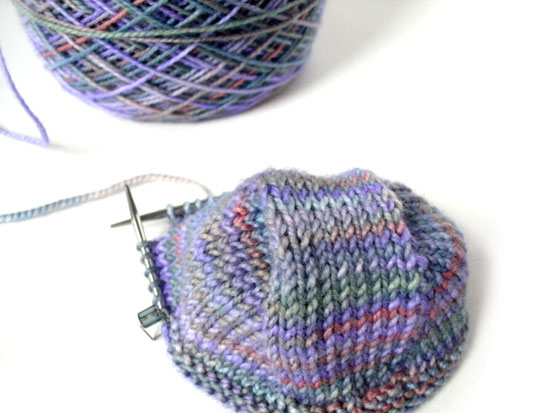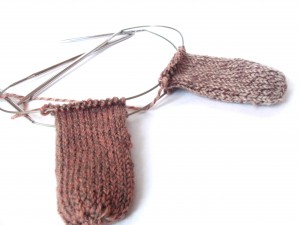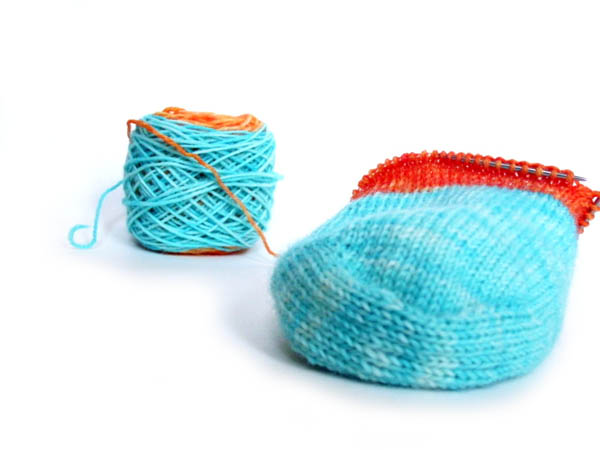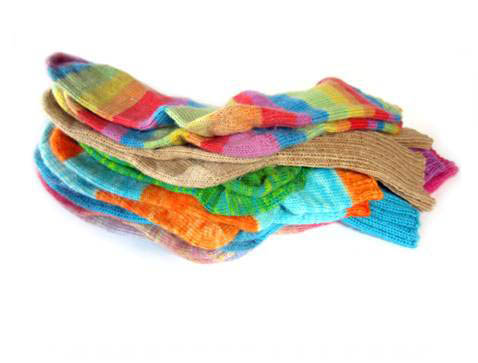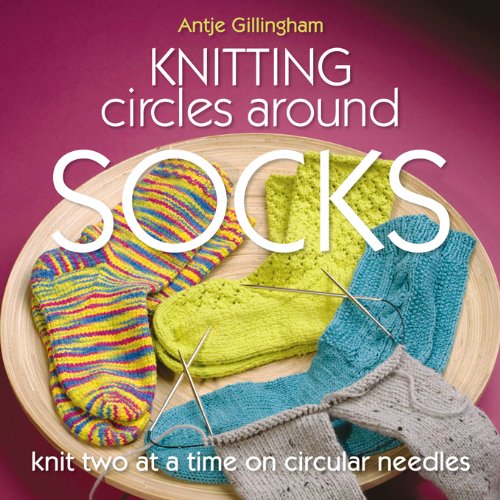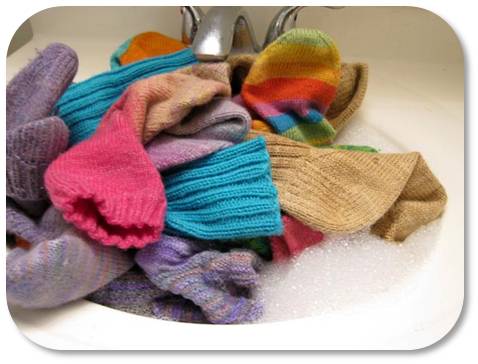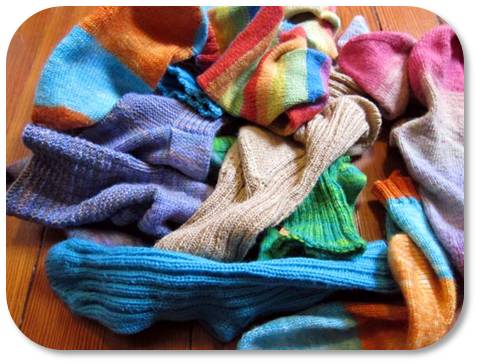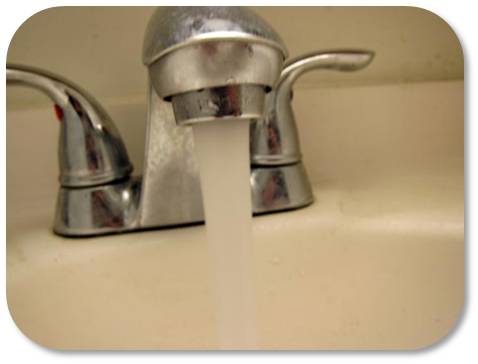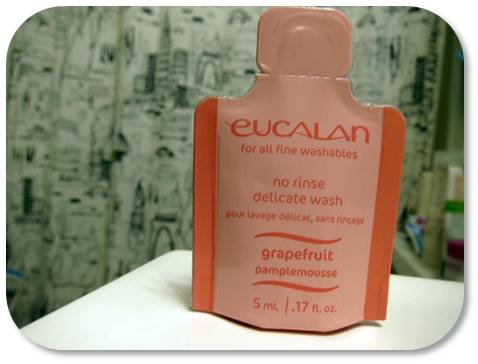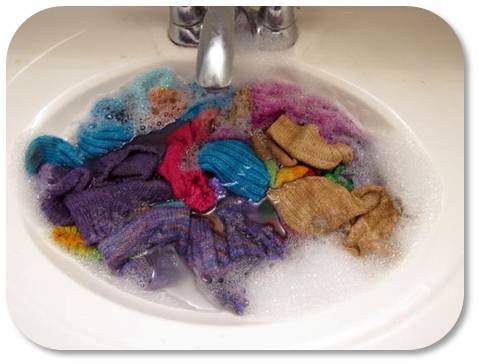A lot of folks get intimidated by sock knitting… and one of the things that’s so scary is picking what kind of needles to use! There are so many choices!

The truth is that the choice of which needles to use is completely personal preference, so you’ll probably have to try out a few. In this post, I’ll talk about the 4 main needle options for sock knitting, as well as the pros and cons of each one. Then, it’s up to you to pick your fave!
Double Point Needles
Options Available: material (metal, wood or plastic), length (ranging from 5-8″)
Double point needles (often abbreviated dpns) are a very common way to knit socks, and probably the most common way you’ll learn when you’re starting out. In fact, it’s the method I use in my Easy Peasy Sock pattern.
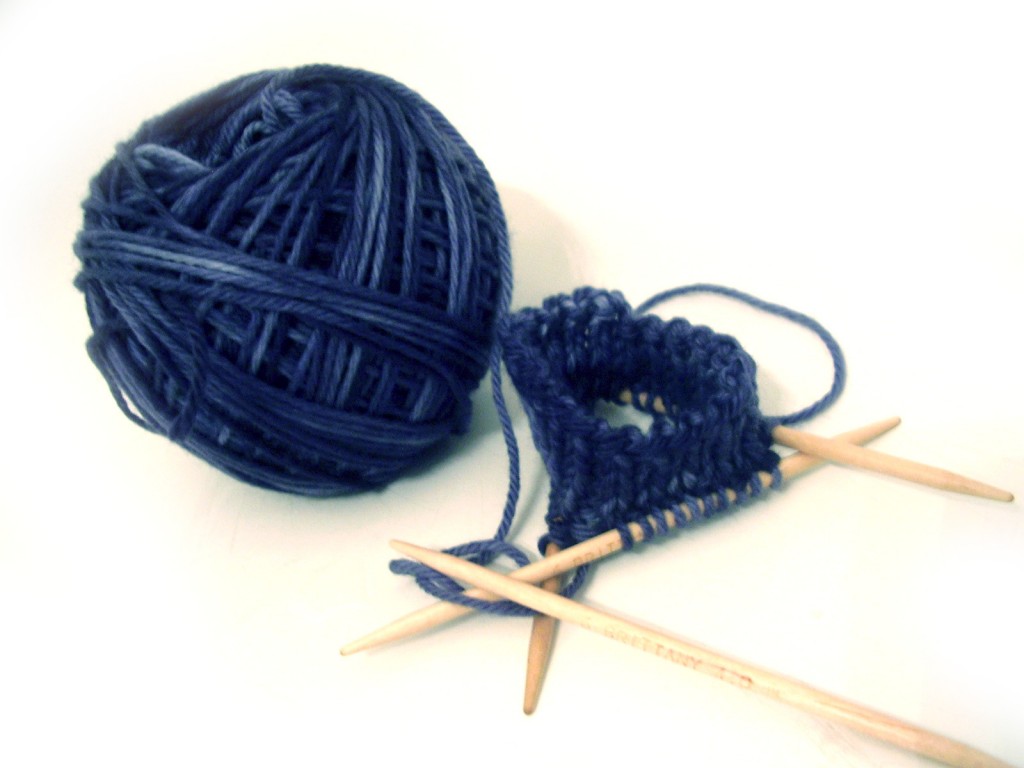
Pros:
- Many sock patterns are written for dpns, so using them for these patterns is a lifesaver! (unless you’re already experienced with tweaking sock patterns)
- They’re not very expensive.
- Almost every needle company makes dpns (or a few!), so you have lots of options.
Cons:
- There is a high probability of ‘laddering’, a funny gap that happens when moving from one dpn to another. You’ll have to knit carefully to avoid it.
- The skinnier ones (which you use for socks) have a tendency to break. You might want to consider metal or needles with a replacement policy.
- You’re using 4-5 needles to make once sock. Losing one (or dropping it under an airplane seat) is sad.
Are you going to be tossing your socks in a purse? Think carefully about how likely your stitches are to fall off, your needles are to break or get lost. If you love dpns, you might want to consider getting double pointed needle tubes so your in-progress socks don’t get into any mischief.
Two Circular Needles
Options Available: all of the options usually available for circular needles: material (metal, wood or plastic), length (ones ranging from 16″ to 32″ are usually used), pointiness of the tip
You can use two circular needles knit socks… they basically behave like 2 giant bendy double point needles. This is the way I knit my first pair of socks, and I love it! It’s a wise idea to use two circulars of different length (or different colored tips) so you can distinguish them while knitting. An added bonus is that this method makes available knitting 2 socks at one time (Knitting Circles around Socks, pictured).
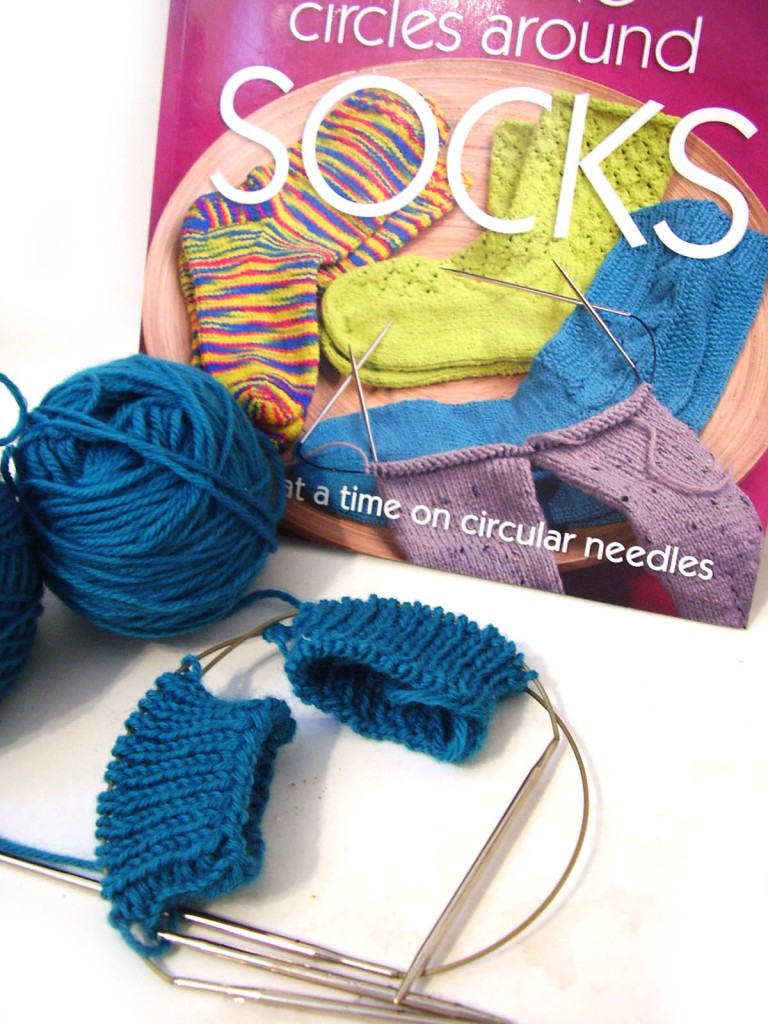
Pros:
- Because there are only 2 spots in between the needles (compared to 3 or 4 with dpns), laddering is less of a problem.
- You may already have the circulars in your needle stash.
- The ability to do two at a time? Rock on!
- The project can easily be tossed in a bag without much risk of stitches falling off.
Cons:
- If you don’t already have the needles, buying two circulars for one pair of socks can be costly.
- Not many patterns are written for this technique, so you may have to do some adaptation.
It’s true, knitting on two circulars (especially two-at-a-time) has a little bit of a learning curve… but if you stick with it, you’re rewarded with less laddering and a more portable project. I also enjoy that you’re able to use your favorite circular needles (like my super-slick Addi Turbos), and don’t have to switch to another brand/style.
One circular needle (aka Magic Loop)
Options Available: material (metal, wood or plastic), pointiness of the tip
Magic Loop works very much like knitting with two circulars, except that you use one very long circular (usually a 40+ inch). The actual knitting technique is very similar, and has the same bonus is that this method makes available knitting 2 socks at one time (2-at-a-Time Socks uses one circular needle).
Pros:
- Just like 2 circulars, less laddering (as compared to dpns) occurs.
- The ability to do two at a time? Still rock on!
- Also like 2 circulars, the project can easily be tossed in a bag without much risk of stitches falling off.
Cons:
- Unless you knit shawls (or really like knitting your socks this way), you’re unlikely to use your 40″ needles on many projects.
- Also like 2 circulars, not many patterns are written for this technique, so you may have to do some adaptation.
To me, knitting on 3 circulars and magic loop (1 long circular) have very similar pluses and minuses. More than anything, it’ll come down to your preference. For me personally, having extra cord drives me nuts. Therefore, magic loop drives me crazy! But for others, remembering which of the 2 circulars to use is endlessly confusing.
A 9″ circular
Options Available: material (metal or wood), pointiness of the tip
I’ll confess: this is my favorite way to knit socks. No laddering, no need to switch needles… just smooth knitting!
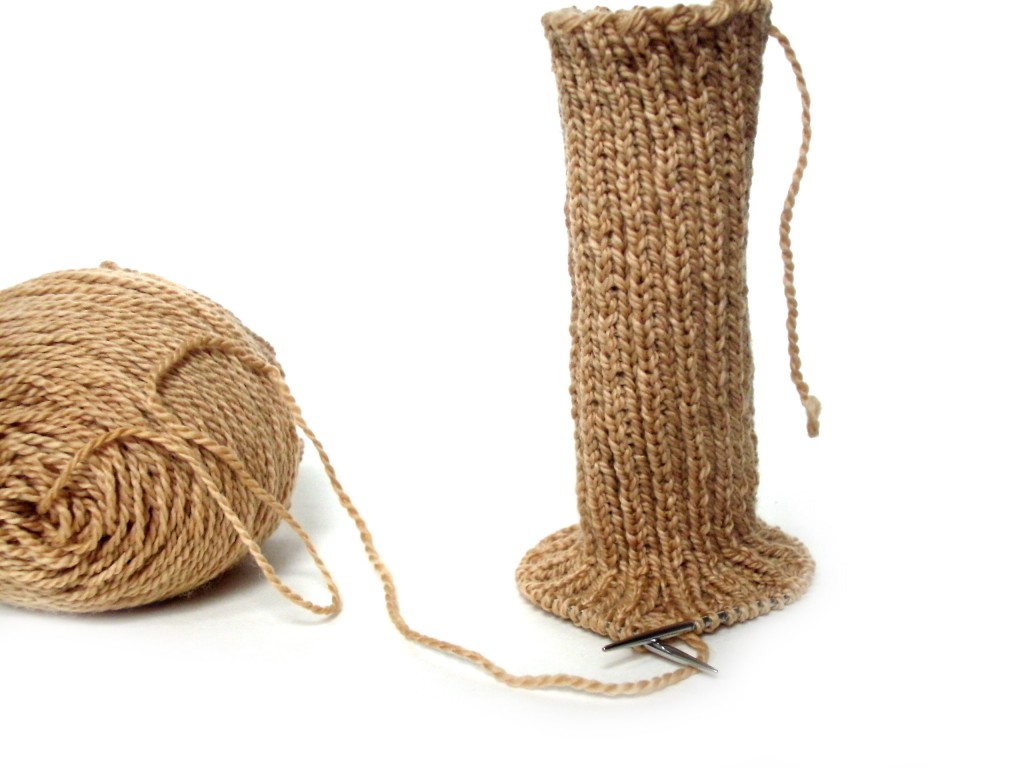
Pros:
- No ladders!
- Very easy to toss in a bag and travel with.
Cons:
- You will need to switch to a different technique (either of the above 3 mentioned) to knit the toe, because there are too few stitches to fit around the circular.
- Again, almost no patterns are written for this technique, so you’ll have to do some adaptation.
- Many people say the smaller size gives them a hand cramp.
- The needles aren’t yet widely available, and won’t be a part of any interchangeable kit.
I travel a lot, and I always bring a sock with me to work on. I absolutely adore the ease and portability (because I’ve had the traumatic experience of a dpn rolling under my airplane seat), and since my hands are small, I don’t mind the knitting. But, I also know a number of people who can’t stand them, so the only way to find out is to try them! The leading manufacturer in making 9″ needles is Hiya Hiya, who has 3 styles available: bamboo, metal and sharp.
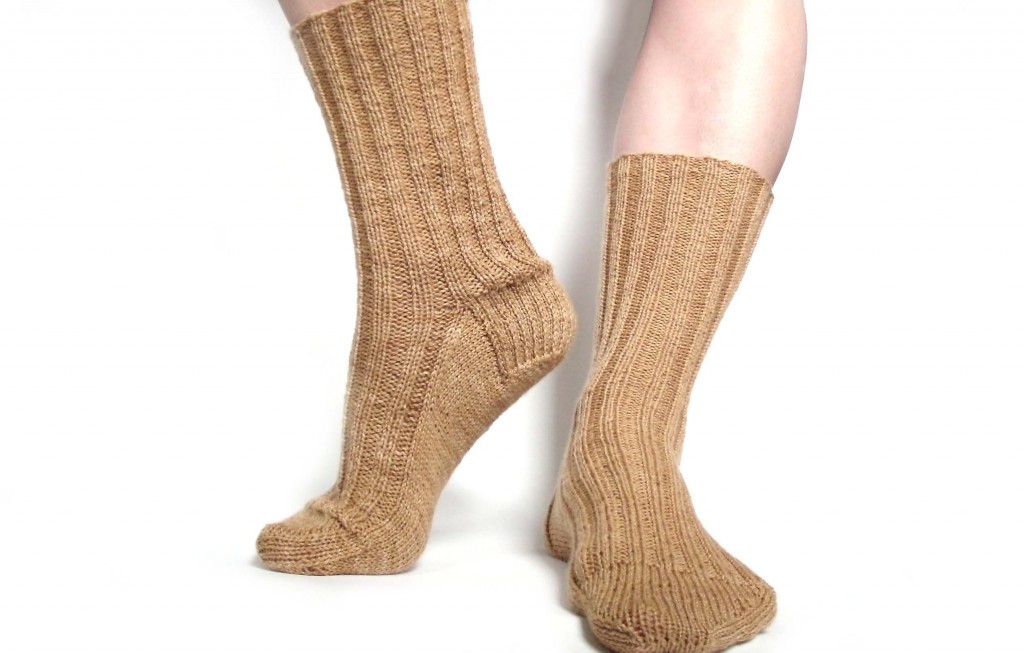
Which are your faves?
What’s your preferred method of knitting socks?
If you’re a newbie… I hope I’ve given you a (not stressful) review of the options that are out there!

